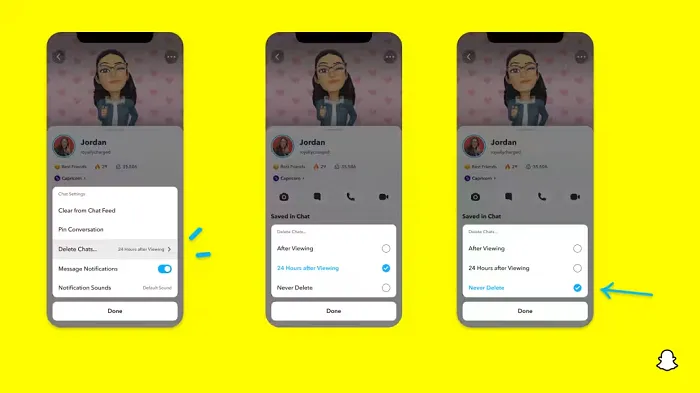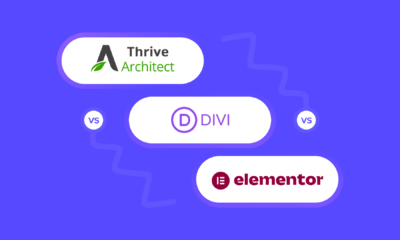SOCIAL
Instagram is Working on a New ‘Bonuses’ Payment Option to Incentivize Reels Creators

It seems that Facebook is still taking inspiration from other platforms as it looks to thwart the rapid ascension of TikTok.
Last November, Snapchat launched its take on the short-form video trend, called Spotlight, which is a feed of short, TikTok-like video clips that live in a dedicated tab within the Snapchat app.

The format is very familiar, and Facebook-owned Instagram already has Reels to cover off on this element. But the key differentiator of Spotlight is the fact that Snap is also paying out $1 million per day to the top Spotlight creators, in order to further boost interest in the option.
That’s been an effective approach, with Spotlight now being visited by 125 million Snapchatters every month, and some creators making big money from their Spotlight clips.
It’s been so effective, in fact, that it appears that Instagram is now looking to introduce a similar payment program, with app researcher Alessandro Paluzzi spotting this announcement screen in the back-end code of the app.

As you can see here, Instagram appears to be testing a new ‘bonuses’ program, which would be focused on Reels promotion.
As per the first point above, the program would enable users to ‘earn bonuses from Instagram’ when they share new Reels content. You would then, seemingly, need to reach certain bonus thresholds in order to claim ‘earnings’ from the program, while there would also be variable bonuses made available to creators.
The explainer notes don’t specifically say that users would earn cash payouts from the program, but it does seemingly align with the Snapchat Spotlight approach, in paying selected creators for their Reels contributions – though apparently based on upload volume as opposed to engagement/quality.
Which, really, is not overly surprising.
Facebook’s product development playbook for the last five years or so has basically come down to two simple elements – ‘CTRL C’ and ‘CTRL V’. Whenever a platform launches something effective, it’s just a waiting game to see when Facebook will copy it, and with its unmatched scale providing the ultimate lure, it’s generally been able to negate and/or blunt competition through this approach.
I mean, if it works, there’s no reason for Facebook to stop doing it – but then again, in the case of TikTok specifically, Facebook, thus far, hasn’t been able to slow its momentum, with the Chinese-owned short-form video app shrugging off Facebook’s various replications and roadblocks to continue forward on its way towards becoming the next billion-user social media platform.
And Facebook has most definitely tried:
- Facebook launched its first TikTok clone called ‘Lasso‘ in 2018, with a focus on markets where TikTok had not yet established an audience. The project never caught on, and Facebook shut Lasso down for good in July last year.
- Facebook has had far more success with its most direct assault on TikTok in Instagram Reels, which Facebook launched in India just days after TikTok was banned in the region. Instagram is still looking at how to maximize Reels, with IG chief Adam Mosseri reporting steady progress for the option.
- Along with the Reels launch, Facebook also offered some of the top TikTok creators big money deals to post to Reels exclusively instead. It’s unclear how effective that’s been in boosting Reels take-up
- Facebook has also launched several TikTok-like experimental apps via its NPE team, including music collaborations app ‘Collab‘ and the rap-focused ‘Bars‘, both of which are centered around short-form video clips.
All of these efforts have been launched with TikTok in mind, as part of Facebook’s strategy to slow the growth of the app. But Facebook’s most direct assault on TikTok is actually rarely discussed, and likely not even known about among the general public.
Back in 2019, Facebook CEO Mark Zuckerberg held a “secret” dinner with then US President Donald Trump, in which the two discussed the many challenges and opportunities within the broader tech sphere.
A key focus of that meeting was indeed the rise of TikTok – as explained by The Wall Street Journal:
“In a private dinner at the White House in late October, Mr. Zuckerberg made the case to President Trump that the rise of Chinese internet companies threatens American business, and should be a bigger concern than reining in Facebook, some of the people said.”
That reflects the same sentiment that Zuckerberg shared in a speech to Georgetown University just ahead of this meeting with Trump, in which Zuckerberg explained that:
“China is building its own internet focused on very different values, and is now exporting their vision of the internet to other countries. Until recently, the internet in almost every country outside China has been defined by American platforms with strong free expression values. There’s no guarantee these values will win out.”
Zuckerberg specifically noted in his speech that TikTok had been censoring some users at the behest of the Chinese Government, as he underlined the rising concerns related to the expansion of the CCP’s reach through such apps.
What happened then?
In early November, literally days after Zuckerberg’s meeting with Trump, the US Government announced a national security investigation into TikTok, which eventually, lead to Trump pushing for a full ban on TikTok in the US, unless it could be sold into US ownership. That eventually fell flat, but the element that many people overlook is that Facebook started that whole process – it was Facebook that sowed the seeds of doubt with the US Government, which eventually saw the Trump administration almost force TikTok out of business, at least as we know it.
It’s also worth also noting in this context that Facebook spent more than any of the big tech giants on political lobbying in 2020, increasing its spend by 17.8% year-on-year to $19.68 million, as it seeks to exert more influence over policy decisions related to its interests.
Facebook is doing all that it can to force TikTok out – and while on one hand, it does actually stand to benefit from the rise of the Chinese-owned app, in that it weakens the FTC’s ongoing antitrust case against the company, Facebook also knows that it could lose out big-time in the long run. It was, of course, Facebook that originally usurped MySpace for social media dominance.
Could TikTok eventually be a ‘Facebook killer’?
Realistically, probably not, but trends that take hold in younger age brackets can lead to new habitual behaviors, and with people now reportedly spending more time in TikTok than they are in either Facebook or Instagram, Facebook does indeed have some cause for concern.
In summary, you can expect Facebook’s replication efforts to continue, and as more platforms find new ways to grow and expand their own offerings, Facebook will keep taking inspiration from those ideas as well, while also pushing for increased Government regulation that works in its favor.
Such is the benefit of being the biggest, most well-resourced player in the space.
SOCIAL
Snapchat Explores New Messaging Retention Feature: A Game-Changer or Risky Move?

In a recent announcement, Snapchat revealed a groundbreaking update that challenges its traditional design ethos. The platform is experimenting with an option that allows users to defy the 24-hour auto-delete rule, a feature synonymous with Snapchat’s ephemeral messaging model.
The proposed change aims to introduce a “Never delete” option in messaging retention settings, aligning Snapchat more closely with conventional messaging apps. While this move may blur Snapchat’s distinctive selling point, Snap appears convinced of its necessity.
According to Snap, the decision stems from user feedback and a commitment to innovation based on user needs. The company aims to provide greater flexibility and control over conversations, catering to the preferences of its community.
Currently undergoing trials in select markets, the new feature empowers users to adjust retention settings on a conversation-by-conversation basis. Flexibility remains paramount, with participants able to modify settings within chats and receive in-chat notifications to ensure transparency.
Snapchat underscores that the default auto-delete feature will persist, reinforcing its design philosophy centered on ephemerality. However, with the app gaining traction as a primary messaging platform, the option offers users a means to preserve longer chat histories.
The update marks a pivotal moment for Snapchat, renowned for its disappearing message premise, especially popular among younger demographics. Retaining this focus has been pivotal to Snapchat’s identity, but the shift suggests a broader strategy aimed at diversifying its user base.
This strategy may appeal particularly to older demographics, potentially extending Snapchat’s relevance as users age. By emulating features of conventional messaging platforms, Snapchat seeks to enhance its appeal and broaden its reach.
Yet, the introduction of message retention poses questions about Snapchat’s uniqueness. While addressing user demands, the risk of diluting Snapchat’s distinctiveness looms large.
As Snapchat ventures into uncharted territory, the outcome of this experiment remains uncertain. Will message retention propel Snapchat to new heights, or will it compromise the platform’s uniqueness?
Only time will tell.
SOCIAL
Catering to specific audience boosts your business, says accountant turned coach

While it is tempting to try to appeal to a broad audience, the founder of alcohol-free coaching service Just the Tonic, Sandra Parker, believes the best thing you can do for your business is focus on your niche. Here’s how she did just that.
When running a business, reaching out to as many clients as possible can be tempting. But it also risks making your marketing “too generic,” warns Sandra Parker, the founder of Just The Tonic Coaching.
“From the very start of my business, I knew exactly who I could help and who I couldn’t,” Parker told My Biggest Lessons.
Parker struggled with alcohol dependence as a young professional. Today, her business targets high-achieving individuals who face challenges similar to those she had early in her career.
“I understand their frustrations, I understand their fears, and I understand their coping mechanisms and the stories they’re telling themselves,” Parker said. “Because of that, I’m able to market very effectively, to speak in a language that they understand, and am able to reach them.”Â
“I believe that it’s really important that you know exactly who your customer or your client is, and you target them, and you resist the temptation to make your marketing too generic to try and reach everyone,” she explained.
“If you speak specifically to your target clients, you will reach them, and I believe that’s the way that you’re going to be more successful.
Watch the video for more of Sandra Parker’s biggest lessons.
SOCIAL
Instagram Tests Live-Stream Games to Enhance Engagement

Instagram’s testing out some new options to help spice up your live-streams in the app, with some live broadcasters now able to select a game that they can play with viewers in-stream.
As you can see in these example screens, posted by Ahmed Ghanem, some creators now have the option to play either “This or That”, a question and answer prompt that you can share with your viewers, or “Trivia”, to generate more engagement within your IG live-streams.
That could be a simple way to spark more conversation and interaction, which could then lead into further engagement opportunities from your live audience.
Meta’s been exploring more ways to make live-streaming a bigger consideration for IG creators, with a view to live-streams potentially catching on with more users.
That includes the gradual expansion of its “Stars” live-stream donation program, giving more creators in more regions a means to accept donations from live-stream viewers, while back in December, Instagram also added some new options to make it easier to go live using third-party tools via desktop PCs.
Live streaming has been a major shift in China, where shopping live-streams, in particular, have led to massive opportunities for streaming platforms. They haven’t caught on in the same way in Western regions, but as TikTok and YouTube look to push live-stream adoption, there is still a chance that they will become a much bigger element in future.
Which is why IG is also trying to stay in touch, and add more ways for its creators to engage via streams. Live-stream games is another element within this, which could make this a better community-building, and potentially sales-driving option.
We’ve asked Instagram for more information on this test, and we’ll update this post if/when we hear back.
-

 PPC6 days ago
PPC6 days agoCompetitor Monitoring: 7 ways to keep watch on the competition
-

 PPC6 days ago
PPC6 days agoA History of Google AdWords and Google Ads: Revolutionizing Digital Advertising & Marketing Since 2000
-

 SEARCHENGINES7 days ago
SEARCHENGINES7 days agoMore Google March 2024 Core Update Ranking Volatility
-

 WORDPRESS5 days ago
WORDPRESS5 days agoTurkish startup ikas attracts $20M for its e-commerce platform designed for small businesses
-

 PPC6 days ago
PPC6 days ago31 Ready-to-Go Mother’s Day Messages for Social Media, Email, & More
-

 WORDPRESS7 days ago
WORDPRESS7 days agoThrive Architect vs Divi vs Elementor
-

 MARKETING5 days ago
MARKETING5 days agoRoundel Media Studio: What to Expect From Target’s New Self-Service Platform
-

 SEARCHENGINES5 days ago
SEARCHENGINES5 days agoGoogle Search Results Can Be Harmful & Dangerous In Some Cases


